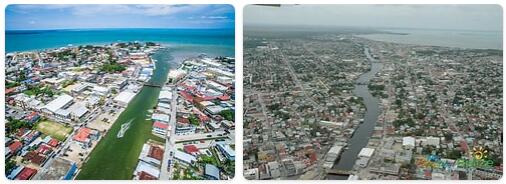
In 2015, Belize was a parliamentary democracy with a bicameral legislature. The two main political parties in Belize were the center-right United Democratic Party (UDP) and the center-left People’s United Party (PUP). Elections were held every five years and in 2015, the UDP had been in power for three years. During this time, Prime Minister Dean Barrow focused on strengthening economic ties with other countries and improving living conditions for all citizens. He also sought to promote social cohesion by encouraging dialogue between different political factions and by addressing issues such as crime, poverty and unemployment. Additionally, he sought to improve relations with Guatemala by negotiating a settlement of their long-running territorial dispute. Despite these efforts, there were still some tensions between the government and opposition parties which could be seen during protests over economic issues such as rising prices for food and utilities. Furthermore, there were reports of human rights violations such as arbitrary arrests and torture of political opponents by security forces. See ehealthfacts for Belize in the year of 2005.
Yearbook 2015

Belize. According to COUNTRYAAH, Belmopan is the capital of Belize which is located in North America. Dean Barrow became Belize’s first prime minister since independence in 1981 to win three parliamentary elections in a row. His party, the United Democratic Party (UDP), increased the number of seats to 19 out of 31 in the November 4 election, despite allegations of corruption and slander within the party. The opposition party People’s United Party (PUP) secured the other 12 seats. Even in the regional elections in March, the UDP went ahead strongly by winning 62 of 67 municipal council seats across the country. The devastating defeat of the PUP caused its leader Francis Fonseca, whose leadership was already strongly questioned, to resign from his post.
- Also see AbbreviationFinder.org for Belize country abbreviations, including geography, history, economy and politics.
Relations with neighboring Guatemala, which claim over half of Belize’s territory, remained tense throughout the year. Though hopes for improved relations were tied to Guatemala’s new President Jimmy Morales, he also made some provocative statements against Belize during his election campaign and no congratulations to Barrow’s victory came either.

HUMAN AND ECONOMIC GEOGRAPHY
State of Isthmian Central America, located in the southeastern part of the Yucatán peninsula. In the last years of the 20th century. and in the early 21st century the demographic dynamics of the population, which at the 2000 census was 240,204 residents and, according to 2005 estimates, it reached 270,000 residents, was characterized by a slowdown in the rate of growth (3.7 % per year in the period 1994-1999, 2.2 % in that 2000 – 2005) despite still high birth rates (29 ‰ in 2005) unfortunately tempered by a still relevant infant mortality. Furthermore, very high unemployment and underemployment fueled important migratory flows (especially towards the United States), which contributed, through significant currency remittances, to support the national economy. The most populous and important city was Belize City (59,400 residents In a 2004 estimate), the de facto capital of the country, while the nominal capital, Belmopan, reached just 12,300 residents. Agriculture remained the fundamental productive sector of the Belize and, in particular the cultivation of sugar cane (the plantations occupy the 80% of the cultivated area and are managed by foreign multinationals), citrus fruits and bananas. The fishing industry was also discreet, seeing a significant development of aquaculture. Tourism (especially cruise tourism) and off-shore financial activities are on the rise (about 25,000 companies were registered in 2003).